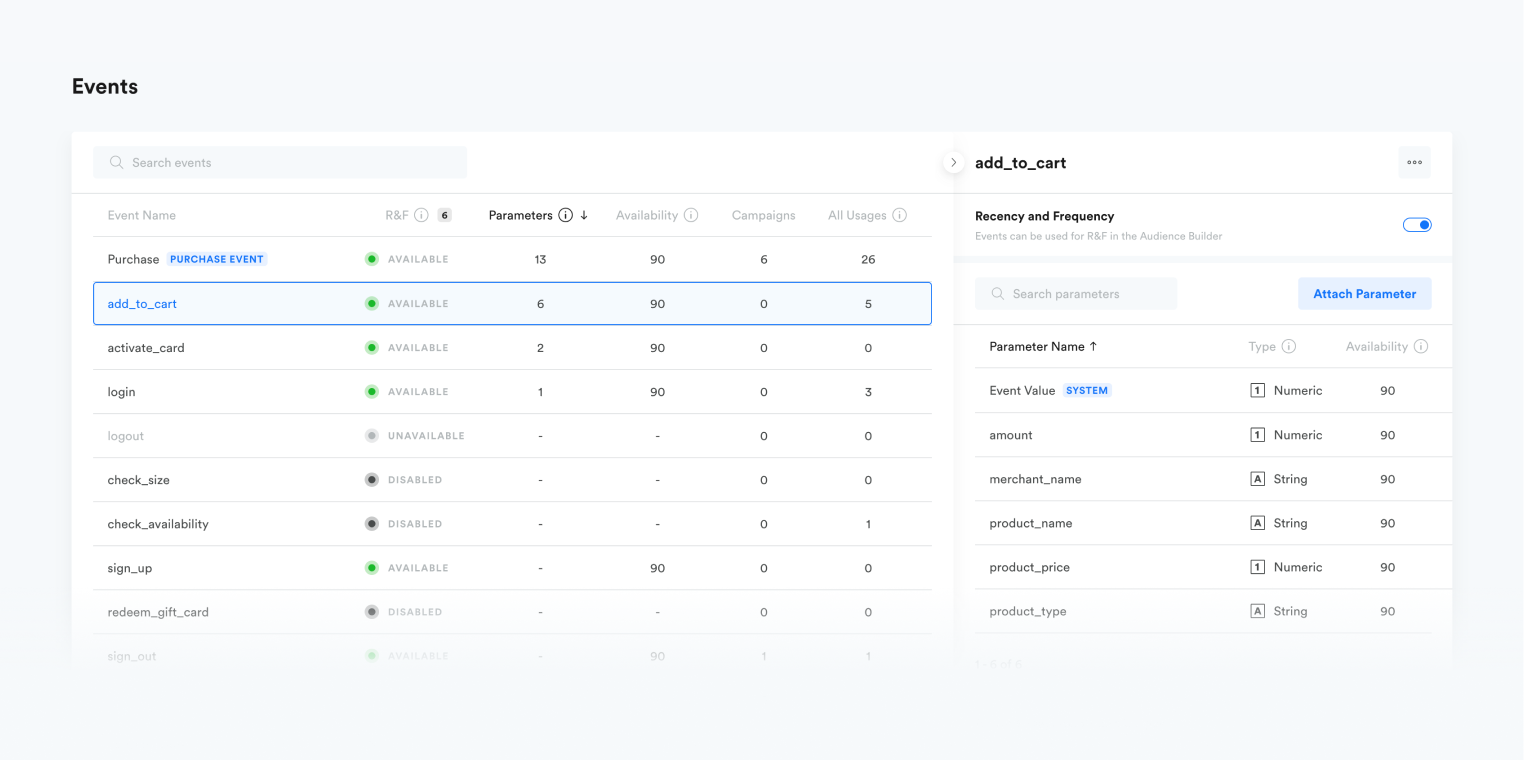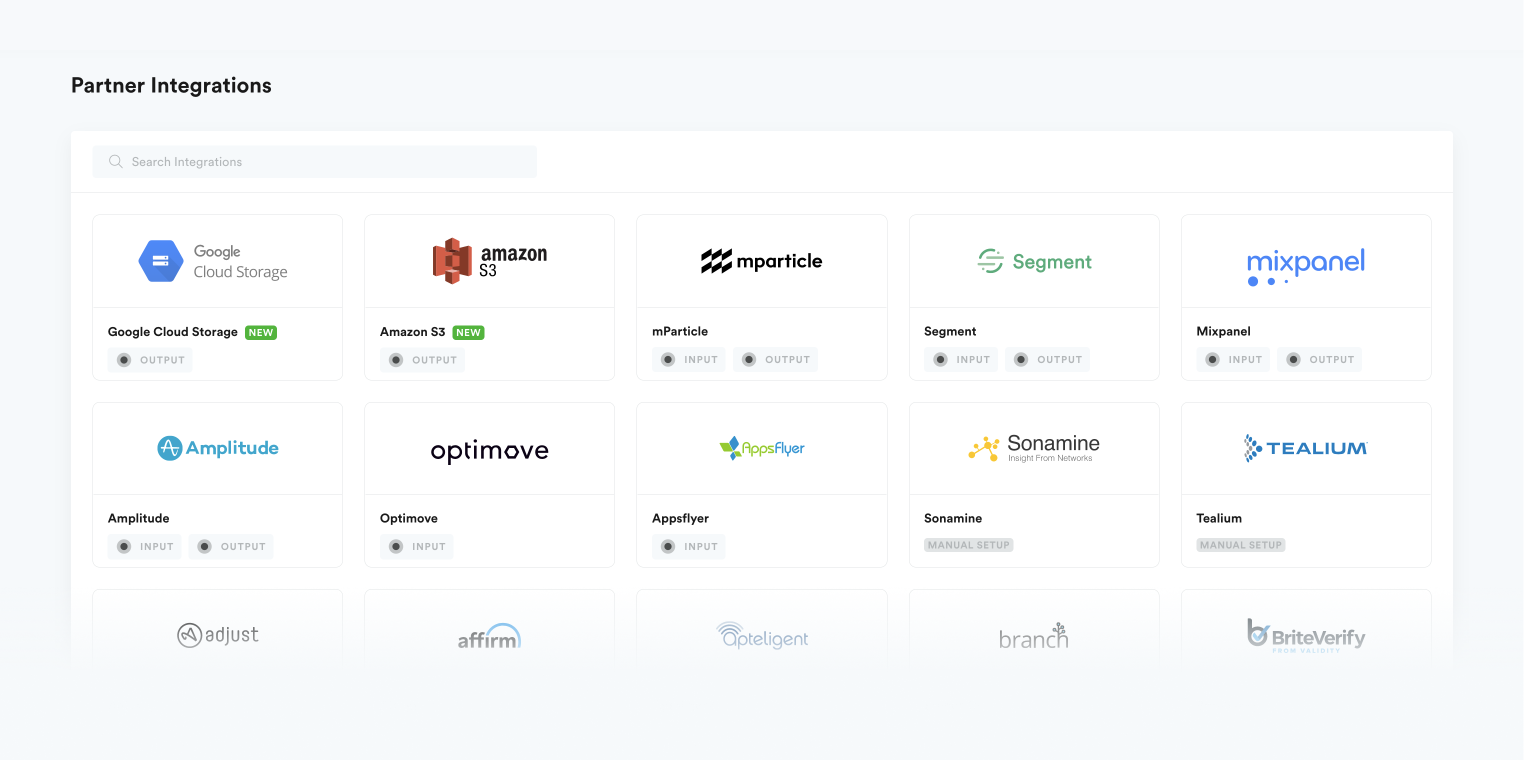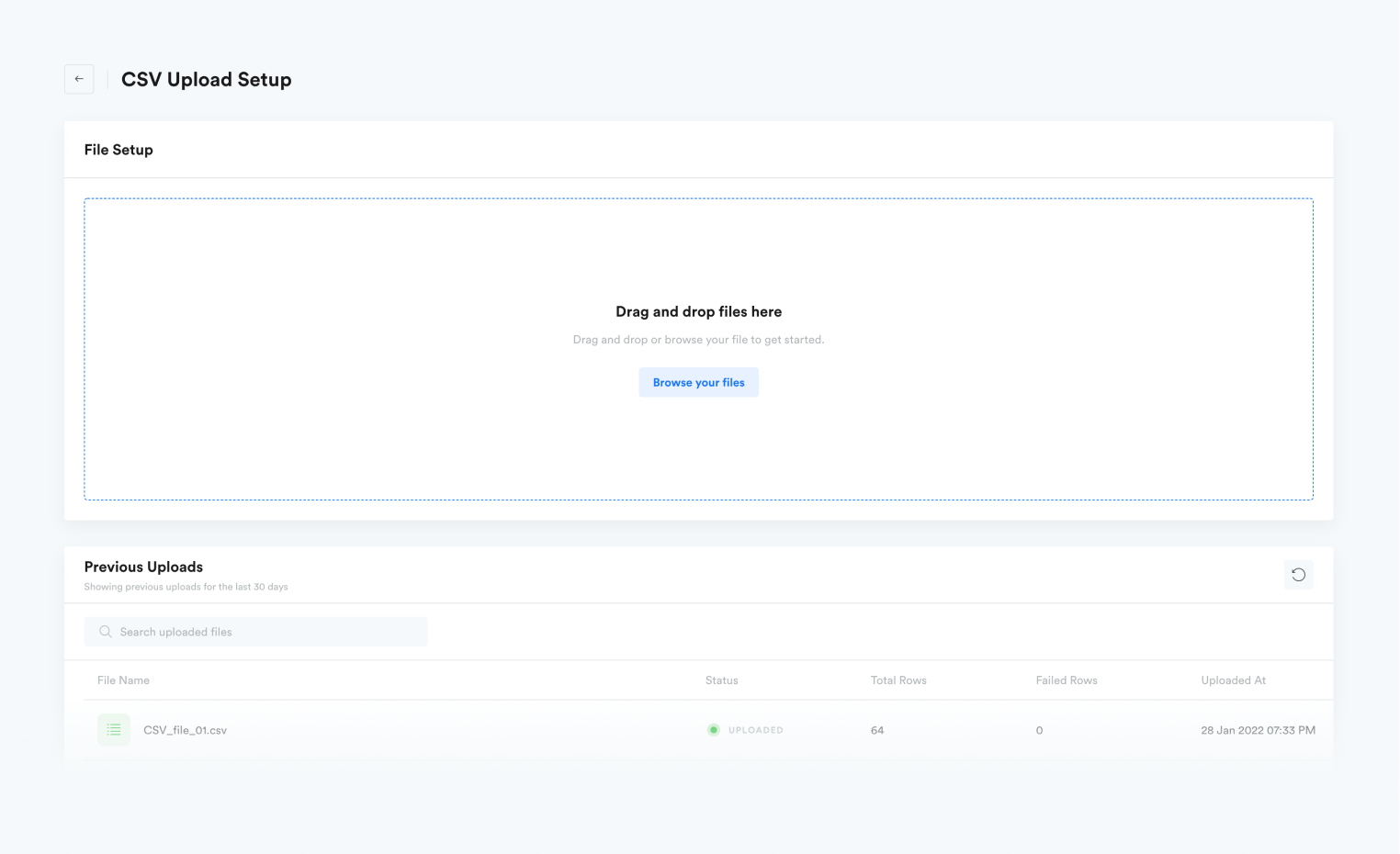Overview
Leanplum is a leading multi-channel customer engagement platform that helps forward-looking brands and marketing teams meet their customers' real-time needs. While our messaging and engagement tools were powerful, our data capabilities had a critical gap. Data was technically accessible, but discovering, managing, or activating it often required developer support. This created bottlenecks and inefficiencies for marketing teams.
This change wasn’t just about fixing fragmented tooling, it was about redefining data access as a strategic advantage. Data had become a hidden blocker across segmentation, experimentation and campaign creation. We needed to elevate it to a first-class product surface; one that marketers could control without depending on engineering. To succeed, we had to align product, engineering, and support teams around a shared vision; making data transparent, trusted, and usable in real time.
I led product design for Leanplum’s Data Management experience, partnering closely with engineering and product to bring a more marketer-centric vision to life. From shaping the strategy to guiding hands-on design execution, I worked end-to-end to ensure the experience aligned with how marketers think and work. This effort required aligning cross-functional teams, defining structural and interaction components, and continuously refining the product based on user feedback and evolving needs.
Problem
The only data-facing tool in the platform was a static Events list with no metadata, context, or controls. User attributes lacked a dedicated management interface, and importing/exporting data was primarily done through APIs. CSV uploads required developer intervention. Partner integrations existed, but weren’t visible or configurable from the UI.
During early audits and user interviews, it became clear that users lacked a clear source of truth for their data. Non-technical users, especially marketers and CRM leads, were regularly blocked from executing basic workflows. Our support team spent a disproportionate amount of time responding to tickets related to data imports, partner setups, and event discovery.
Research
Product Analysis
We began by auditing the existing experience and reviewing common support tickets. The Events list presented raw data, but lacked the metadata and control users needed to make sense of it. Setting up CSV imports or integrations required combing through documentation or working with developers. In practice, many marketers simply avoided these workflows altogether.
User Interviews
In user interviews, marketers often shared that they weren’t confident in what data existed or how reliable it was. Many said they avoided attempting data uploads or partner integrations altogether to avoid back-and-forth with engineering. I co-led these interviews and facilitated the synthesis process with the team to identify critical gaps that shaped our design approach.
Solution
We prioritized modules based on the severity of user friction and dependency on support teams. Events and Attributes were addressed first due to their central role in segmentation and the high volume of related support tickets. The Partners integration and CSV Uploads followed as critical enablers for marketer autonomy, completing the inbound and outbound data ecosystem.
We introduced a new top-level navigation item, Data Management. This became the central hub for all data integrated into and out of Leanplum. I worked closely with the PM and engineering leads to define the information architecture and interaction model for this new surface.
We built four modular, interconnected components:
- Events: View and edit all tracked user events, with added metadata and validation controls.
- Attributes: Manage user properties through a similar interface to Events.
- Partners: A directory of third-party integrations with setup flows embedded directly into the UI.
- CSV Uploads: A drag-and-drop interface for non-technical users, with inline validation and upload history.
Each module reused consistent patterns from the rest of the product.

Design Considerations
Events & Attributes
We initially explored using a two-level detail view pattern similar to what we had implemented in the Audiences page. However, due to technical constraints, saving edits on individual records would block the entire interface while the backend job completed. This would have introduced a frustrating delay for users.
To resolve this, I designed a single-page layout that allowed users to make batch edits across events and then save them together. This pattern preserved flexibility while accommodating technical constraints. We also added persistent save indicators and inline validation to prevent surprises.

Partners
Integrations were previously handled through engineering teams and documentation. We made them discoverable and actionable in-product by introducing a Partners page where users could view and configure integrations directly from the UI. This also helped surface and promote the full set of available integrations in Leanplum, many of which users were previously unaware of.


CSV Uploads
We designed a streamlined drag-and-drop experience for uploading user data via CSV. Integrated validations provide immediate feedback on file structure and formatting issues before upload. To support collaboration and traceability, we also included a visible upload history with metadata such as filename, upload time, and uploader.

Feedback & Iteration
User Validation
We tested early flows and interface concepts with users and used their feedback to refine how we surfaced data status. One of the most significant insights came during the beta phase where users struggled with the Events module's save behavior. Many were confused when editing individual events caused delays or interface blocking. This validated the need for our earlier tradeoff for replacing the traditional detail view with a batch-edit single-page model. It also clarified our prioritization going forward; optimizing batch workflows became critical to meeting user expectations at scale, and we shifted additional design focus toward clarity, responsiveness, and feedback mechanisms for these batch actions. The feedback reinforced that, while the adjustment required a learning curve, it ultimately aligned better with how teams work across multiple events in one session. I collaborated with the team to translate these findings into further usability refinements.


Design Critiques
We ran regular critiques across design, product, and engineering to pressure-test ideas and align on feasibility. These sessions helped surface implementation risks early and informed refinements, particularly in areas affected by backend constraints.
Impact
- User Empowerment: Non-technical users gained the ability to access and manage data without relying on engineering or support. This unlocked faster iteration cycles and gave marketing teams greater autonomy in campaign setup.
- Support Load Reduction: Tickets related to data access, configuration, and imports dropped significantly, allowing support teams to focus on higher-impact work.
- Expanded Product Offerings: By surfacing and enabling partner integrations directly within the platform, we extended Leanplum's capabilities and positioned Data Management as the foundation for future ecosystem expansion and vendor flexibility.
Reflection
Data Management laid the foundation for broader data governance and user behavior segmentation, both critical to the long-term success of Audiences. By centralizing visibility and control over events and attributes, we enabled teams to define, analyze, and refine audiences with greater precision. This shift transformed how Leanplum treated data. No longer just a backend artifact, but a strategic, user-facing capability that empowered marketing teams to explore, validate, and activate their data directly. What was once a blocker became a core enabler of campaign strategy and lifecycle marketing